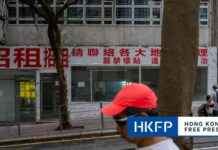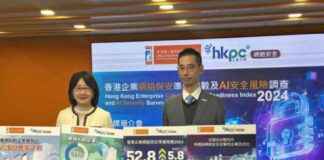Addressing the Knowledge Gap in Chinese History Teaching
As the Mid-Autumn Festival public holiday coincided with September 18 this year, many Hong Kong students were more preoccupied with lanterns and mooncakes than reflecting on the historical significance of the date. September 18, 1931, marked the beginning of Japan’s invasion of China, known as the 918 Incident. Despite being covered in the curriculum for junior secondary students, many teenagers lack a deep understanding of this pivotal event in Chinese history.
Several students interviewed by RTHK admitted to having some knowledge of the 918 Incident but were vague on the details. One secondary three student mentioned that their school had discussed the events and educated them about it, while another student admitted to primarily learning about it through online platforms and YouTube. It is clear that while some exposure to the topic exists, there is a gap in how effectively Chinese history is being taught in schools.
The Importance of Comprehensive Chinese History Education
Professor Cheung Sui-wai, head of the history department at Chinese University, highlighted the challenges in teaching Chinese history effectively. He pointed out that many teachers lack the necessary training to deliver accurate and engaging lessons on Chinese history. In particular, the practice of having Chinese and language teachers double up as history instructors may compromise the quality of education in this subject.
Cheung emphasized the distinction between teaching Chinese history and other subjects, noting that true scholars of Chinese history can provide a broader perspective by placing China within a global context. He expressed concern over the trend of STEM education taking precedence in schools, leading to a decline in the quality of history teaching. Cheung criticized instances where science teachers were tasked with teaching history, resulting in inaccurate information being conveyed to students.
Enhancing Chinese History Curriculum and Teaching Methods
To address the knowledge gap in Chinese history education, there is a need to reassess the curriculum and teaching methods. While the 918 Incident and the broader history of China’s resistance against Japan are included in the curriculum, there is room for improvement in how these topics are presented to students. Teachers should be equipped with the necessary training and resources to deliver engaging lessons that foster a deeper understanding of Chinese history.
One approach to enhancing Chinese history education could be to make the subject compulsory for senior secondary students. However, simply mandating the study of Chinese history without ensuring active engagement from students may not be effective. Cheung cautioned against treating Chinese history as a mere box to check off, emphasizing the importance of meaningful learning experiences for students.
Incorporating interactive teaching methods, such as simulations, debates, and discussions, could make Chinese history more engaging for students. By connecting historical events to contemporary issues and encouraging critical thinking, teachers can help students develop a deeper appreciation for the complexities of Chinese history. Additionally, using multimedia resources and primary sources can provide a more immersive learning experience for students.
Furthermore, collaboration between history educators, curriculum developers, and policymakers is essential to continuously improve the quality of Chinese history education. By sharing best practices, developing innovative teaching strategies, and incorporating feedback from students, teachers can create a more dynamic and engaging learning environment for studying Chinese history.
Raising Awareness and Appreciation for Chinese History
In addition to enhancing the curriculum and teaching methods, raising awareness and appreciation for Chinese history among students and the broader community is crucial. Events like the 918 Incident played a significant role in shaping China’s history and its relationship with other nations. By understanding the historical context and implications of such events, students can develop a deeper sense of national identity and pride.
Educational initiatives, such as museum visits, guest lectures, and historical reenactments, can provide students with a more immersive learning experience outside the classroom. By engaging with historical artifacts, visiting historical sites, and interacting with experts in the field, students can gain a more holistic understanding of Chinese history and its impact on the present.
In conclusion, improving Chinese history teaching requires a multifaceted approach that addresses curriculum design, teacher training, and student engagement. By reevaluating the current practices and implementing innovative strategies, educators can foster a deeper appreciation for Chinese history among students. Ultimately, a well-rounded education in Chinese history can empower students to understand their cultural heritage, connect with their roots, and contribute to a more informed and enlightened society.



















